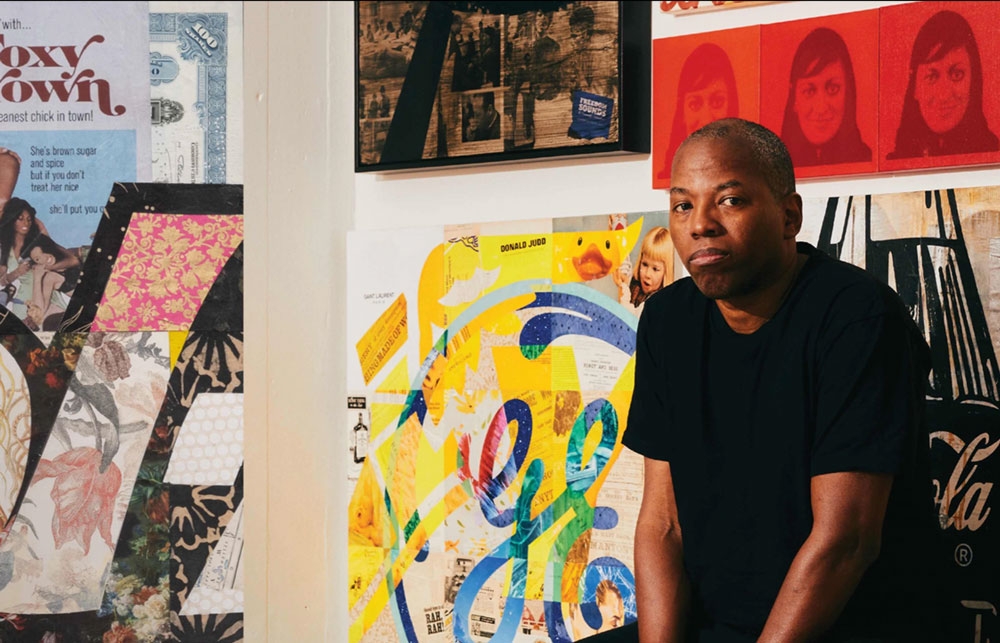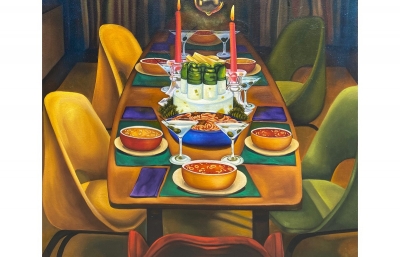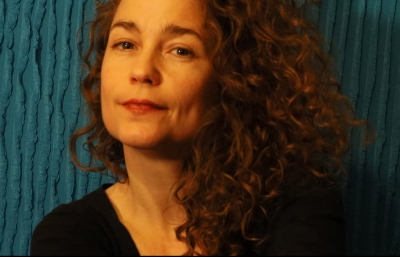Cey Adams
Universal @ Artemizia Foundation
Essay by Evan Pricco
There are people that we call “The Bridge,” connecting two sides of cultural milieu together into something not only others can traverse across but also a solid foundation for it to last for decades and decades. Cey Adams is literally, a network of bridges. He’s the Brooklyn, Manhattan and Williamsburg Bridges all in one. From roots in graffiti that he took to graphic design that became the visual identity of the burgeoning years of hip-hop, Adams has now become a preeminent fine artist with a studio practice, a trailblazer who brought generations with him.
Cey Adams is more than an artist; he's a force of cultural commentary, a bridge between worlds that seem disparate yet are sewn together through his innovative approach. Known initially as a graffiti artist on the subway cars of New York City, Adams' journey weaves through the fibers of Hip-Hop like a narrative thread, linking nostalgic rebellion with mature introspection. It's a privilege to delve into the life and work of an artist who not only shaped the visual language of a musical movement but also continues to redefine his craft in the ever-evolving dance of contemporary art. Perhaps that is why Adams' solo show at Artemizia Foundation's Gallery 818 is called Universal; he represents so much of what our culture has been, is and will be into the future.

In the late 1970s and early 80s, the streets of New York were alive with the nascent energy of a new cultural lexicon— Hip-Hop. It was here that a young Cey Adams began leaving his mark, literally, on the walls and trains of the city. Graffiti was not just a form of expression; it was a radical statement, a visual voice for the voiceless. For Adams, it was an entry into a world where art and identity could collide in spectacular color.
His early work in graffiti soon led him to the heart of Hip-Hop's emerging empire. Adams served as the founding Creative Director of Def Jam Recordings and co-founded The Drawing Board, where he “defined the visual culture of Hip-Hop” by creating the visual identities, album covers, logos and advertising campaigns for Run DMC, Beastie Boys, LL Cool J, Public Enemy, The Notorious B.I.G., Jay-Z, and many more. Adams, with his razor-sharp eye and unmatched graphic design skills, became the visual architect of the label's identity. His work on album covers and logos is legendary, each piece a testament to the synergy between music and visuals, encapsulating the raw energy and ethos of Hip-Hop at the time. Logos designed by Adams include Beastie Boys, Museum of Graffiti, Dave Chappelle and Artemizia Foundation’s ‘AF’ logo.
To pigeonhole him solely within his contributions to Hip-Hop would be an injustice to his expansive creative journey. The evolution of his artistry can be seen in his transition towards fine art, with a particular focus on collage—an art form that marries disparate elements into cohesive wholes. This transition seems fitting, as early graffiti work also had a collage aspect, piecing together colors and shapes in public spaces.

Adams’ current works, especially his Trusted Brands series, illustrate his ability to transform everyday commercial graphics into provocative art pieces. In this series, he deconstructs and reimagines familiar corporate logos and advertisements, challenging viewers to reconsider the omnipresence and influence of brands in our daily lives. Each piece acts as a cultural critique, inviting audiences to ponder their own interactions with consumer culture. In doing so, Adams breaks down the barriers between high art and commercial design, a theme that resonates deeply within Juxtapoz's own ethos of blurring artistic boundaries.
Trusted Brands is a testament to Adams’ artistic evolution. At a time when global consumerism is under intense scrutiny, Adams' work feels incredibly relevant. Each city the body of work visits becomes a backdrop for conversations about identity, economics, and the pervasive presence of brands that shape our environments and perceptions.

In his collage work, Adams employs materials like vintage signage, comic strips, and iconic advertisements, layering them together with text and color in a way that simultaneously hides and highlights each element. There is a tactile intimacy to these collages, a testament to his skills as both a designer and a storyteller. They are evocative and rich with narrative, each telling stories of past and present cultural icons, accessible yet profound.
This is what makes Cey Adams particularly compelling today: it is not just his illustrious past but his present engagement with themes that are both timeless and timely. His ability to navigate through various creative forms speaks to his adaptability and commitment to exploring the societal mirror art holds up to culture. Workshops and educational talks offered by Adams bring his insights to the forefront, helping shape young artists’ understanding of the intersection between creativity and cultural expression. In sharing his journey, Adams positions himself not just as an observer of change, but as an active agent of cultural discourse.
From spray cans to scissors, Adams' instruments have changed, but his mission remains: to connect, to challenge, and to innovate. His legacy is found not only in the tangible pieces he creates but in the enduring dialogues he sparks about art's role in society. As we consider his body of work, both historical and contemporary, Adams reminds us that art is not merely an aesthetic experience but a continuous conversation with the world.

In the spirit of Hip-Hop, which thrives on celebrating those who push boundaries, Adams stands as a beacon of perseverance and adaptability. His work continues to resonate, reminding us that art is an ever-shifting landscape, one where voices like Adams not only reflect the times but shape them. As an elder statesman of Hip-Hop's golden era turned modern art's thoughtful provocateur, he continues to inspire, reminding us that the true power of art lies not only in its ability to capture history but also in its potential to carve out a compelling narrative for the future. His work remains a beacon for those who look to art as a means to both reflect and shape the world around us. —Evan Pricco, Editor-in-Chief, Juxtapoz Magzine, September 2024
Cey Adams: Universal is on view October 26 - December 8, 2024 at Artemizia Foundation’s Gallery 818 in Bisbee, Arizona. Join Cey Adams for the opening, October 26th from 1-4pm
Cey Adams: Universal is on view October 26 - December 8, 2024 at Artemizia Foundation’s Gallery 818 in Bisbee, Arizona. Join Cey Adams for the opening, October 26th from 1-4pm






